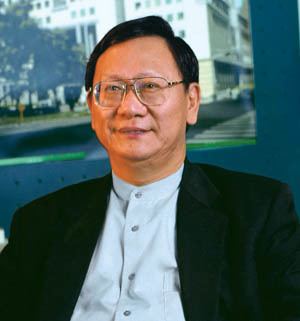Name C. Wang | Role Architect | |
 | ||
C. P. Wang (Wang Chung-ping) (born 1947 in Beijing, China) is a Taiwanese architect. He received his bachelor's degree from Tunghai University in 1971 and his Master of Architecture from Washington University in St. Louis, Missouri in 1973. He is co-principal of the architectural firm C.Y. Lee & Partners, located in Taipei, Taiwan. C.P. Wang was one of the prominent designers of Taipei 101, which was the world's tallest skyscraper from 2004 to 2010.
Contents
List of major designs
Quotes
""I grew up in Taipei in the 1960s, so I was used to seeing tall buildings, but the architectural landscapes I saw in Chicago and New York were dazzling—and so diverse. Seeing these was a magical experience."
"As a Chinese architect trained in the United States, I'm especially interested in architecture that synthesizes Western and Eastern cultures."
"It's rewarding to conceptualize a design that serves not only the client but also represents the culture and serves the needs of a building's inhabitants."
